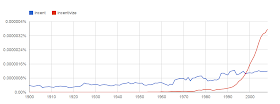Johnson & Johnson's official story has been that
the original material was developed by the Permacel division of Johnson & Johnson in 1942 as a waterproof sealing tape for ammunition boxes in the US Army. ... Because the fabric backing was made from cotton duck and because it repelled moisture "like water off a duck’s back," it became known to soldiers as duck tape.It's a good story, but none of us have been able to find a shred of evidence for it, despite the abundance of World War II-era documentation. In fact, "the tapes used by the US Army during the war for sealing ammunition cases and other uses were off-the-shelf brands, including Johnson & Johnson’s Jonflex and Utilitape," Quinion reports. And there's no sign that soldiers called these either duck tape or duct tape; those terms were popularized in the 1960s and '70s.
The issue has long been confused by the existence of early references to "duck tape" meaning cloth tape made of cotton duck, whether stickified for sealing or used for other purposes; during my search I unearthed several old ads for Venetian blinds with ladders made of this woven cloth "duck tape." But it's pretty clear now that both terms, the "logical" duct tape and the (now trademarked) Duck Tape, have reasonable -- and fairly recent -- claims to legitimacy.
